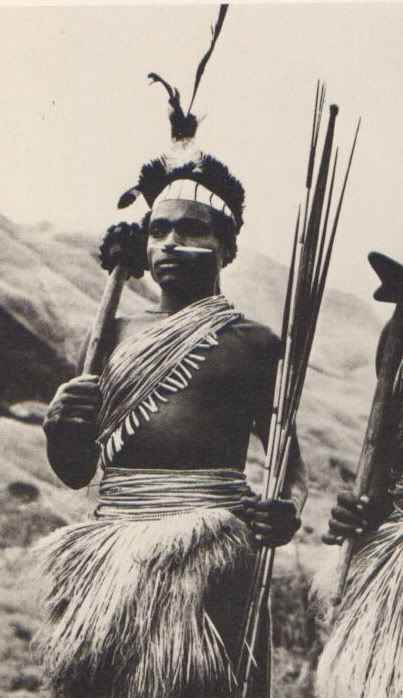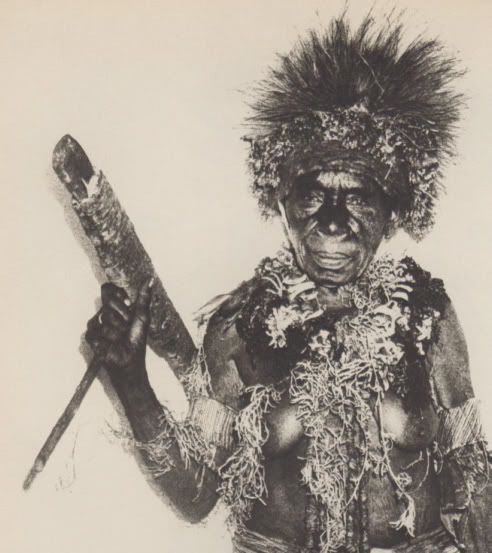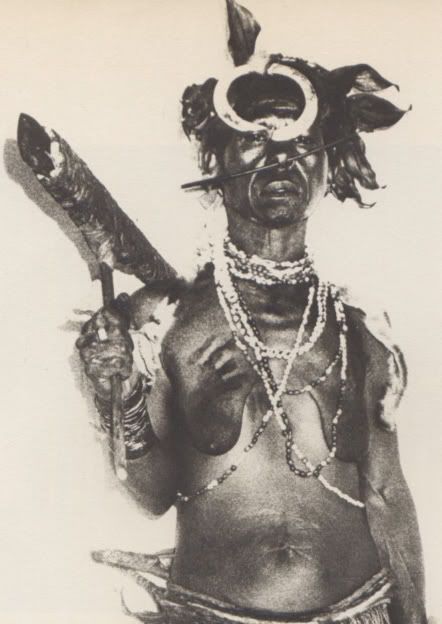
 |
|
|
|
|
#1 |
|
Member
Join Date: Dec 2004
Location: What is still UK
Posts: 5,935
|
I want this one. I think this is made of two types of wood like some African throwing clubs. The halft is very similar but not of the same construction, but I have more.
 These charming ladies have slate dress clubs. I have more.   More to come. I could go on uploading picture untill tomorrow so there really is not much point. I was completely unaware that flint was only found in England  . .
Last edited by Tim Simmons; 26th March 2007 at 08:50 PM. |
|
|

|
|
|
#2 |
|
Member
Join Date: Dec 2004
Posts: 1,247
|
Hi Tim,
Neat pics, but I think you may be mistaken about the materials in the first one: I'd guess it's a stone-headed club, not wood-headed: Pic from the web The axes are from the Jimi Valley, and Sir David Attenborough of all people, describes them being made at a place called Menjim in the 1950's. The book is called Journeys to the Past, first published in 1959. Flint is just a form of cryptocrystalline silicon, aka chert. It's pretty common in England, France, and Belgium, but cryptocrystalline quartz is found all over the world. Check out the Wikipedia article for some more info, although it's incomplete. |
|
|

|
|
|
#3 |
|
Member
Join Date: Dec 2004
Posts: 58
|
Tim, Fearn, All three clubs are Stone heads. Rod
|
|
|

|
|
|
#4 |
|
Member
Join Date: Dec 2004
Posts: 1,247
|
You're right, Inveterate, although the bottom two are technically axes with wooden counterweights (the back blade) covered with woven rattan. Those stone axes are mostly abandoned to ceremonial use, now that steel axes are available.
F |
|
|

|
|
|
#5 |
|
Member
Join Date: Dec 2004
Posts: 58
|
Fearn, Yes most commonly from the Mt Hagen area. Tim , have now had the opportunity to go through 2 extensive libraries on Oceanic and Aboriginal Artifacts and can find nothing like your club, Am wondering could it be European or African? Cheers Rod
|
|
|

|
|
|
#6 |
|
Member
Join Date: Dec 2004
Location: What is still UK
Posts: 5,935
|
I will try to get into town this April. I do not think it is anything other than Melanesian or Micronesian. Look at sago pounders and adze from these regions. Maybe we only need to wait a week or so, all depends on how much work I have to do.
|
|
|

|
|
|
#7 |
|
Member
Join Date: Dec 2004
Location: What is still UK
Posts: 5,935
|
I am on a mission to find all pictures of similar consruction. This is a tool and nowhere near as carefully made as the flint club.
http://www.tribalworldbooks.com.au/mlPage5.html |
|
|

|
 |
|
|